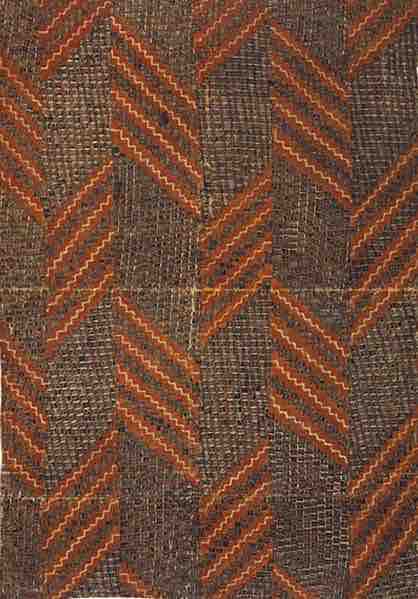Overview: Hawaii
Hawaii represents the northernmost extension of the vast Polynesian triangle of the south and central Pacific Ocean. While traditional Hawaiian culture remains only as vestiges in modern Hawaiian society, there are reenactments of the ceremonies and traditions throughout the islands. Some of these cultural influences are strong enough to affect the United States at large, including the popularity (in greatly modified form) of luaus and hula.
The Hawaiian archipelago consists of 137 islands in the Pacific Ocean that are far from any other land. Polynesians arrived there 1,000-2,000 years ago, and in 1778 Captain James Cook and his crew became the first Europeans to visit Hawaii (which they called the Sandwich Islands). The art created in these islands may be divided into art existing prior to Cook's arrival; art produced by recently arrived westerners; and art produced by Hawaiians incorporating western materials and ideas.
Traditional Hawaiian Art
Art existing prior to the invasion of Europeans is very similar to the art of other Pacific Islanders. This art includes wood carvings, feather work, petroglyphs, bark cloth (called kapa in Hawaiian and tapa elsewhere in the Pacific), and tattoos. Native Hawaiians had neither metal nor woven cloth. Production of these styles of art continued after Cook's arrival, and a few craftsmen still produce traditional Hawaiian arts, either to sell to tourists or to preserve native culture.

Hawaiian kapa, 18th century
Kapa is a kind of bark cloth, or fabric made by Native Hawaiians from the bast fibers of certain species of trees and shrubs.
Kapa
Kapa is a fabric made by Native Hawaiians from the bast fibres of certain species of trees and shrubs. It is similar to tapa found elsewhere in Polynesia, but it differs in the methods used in its creation. Kapa is based primarily on the creative combination of linear elements that cross and converge to form squares, triangles, chevrons, and diagonal forms, giving a feeling of boldness and directness. The fabric was used primarily for clothing, such as the malo worn by men as a loincloth, the pāʻū worn by women as a wraparound, and the kīhei worn over the shoulders. Kapa moe (bed covers) were reserved for the aliʻi or chiefly caste, while kapa robes were used by kāhuna or priestly caste. Kapa was also used as banners to hang leis and images of gods.
Cultural anthropologists over the course of the 20th century identified techniques in the creation of kapa that are unique to the Hawaiian Islands, involving soaking the bark in water, laying it out on a stone tablet, and beating it with a rounded beater. In the 18th century, pieces of kapa were often made of grooving or ribing, done by pushing a dampened cloth into the grooves of a special board. The process of making kapa was done primarily by women; young girls would learn by helping their mothers, over time doing more of the work until they could make kapa themselves.